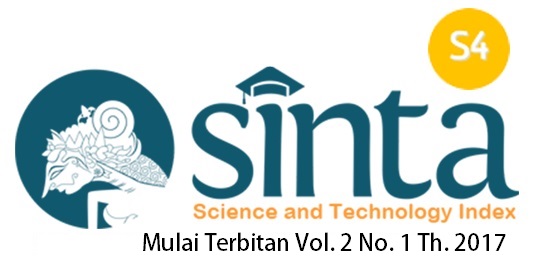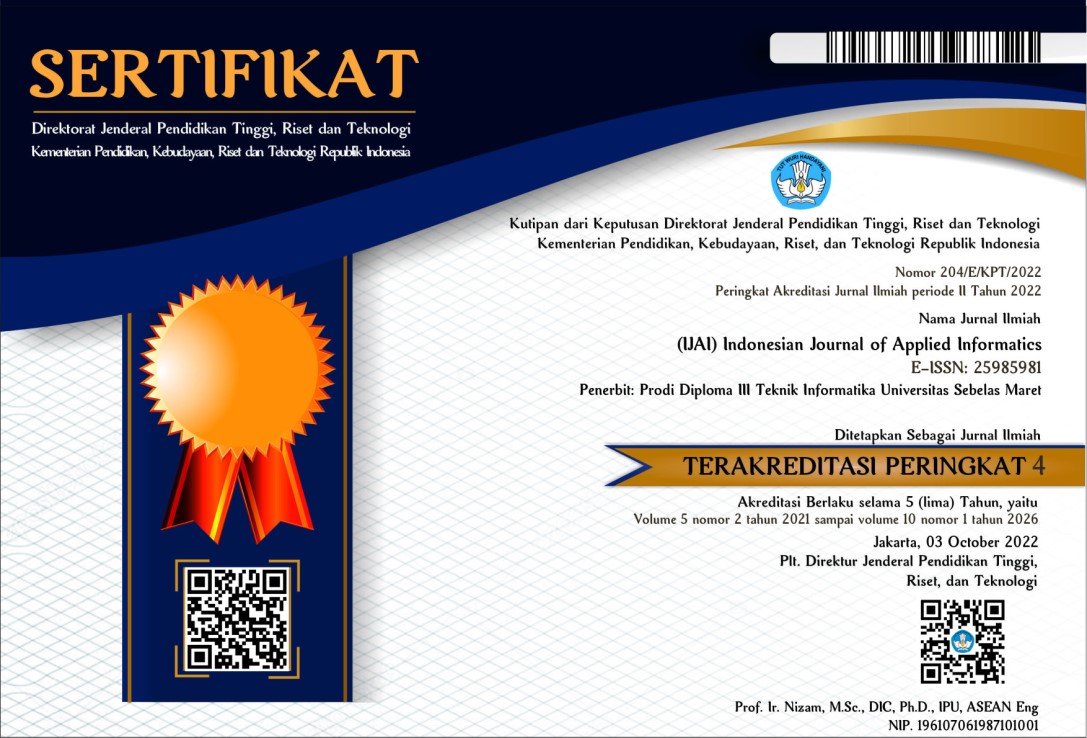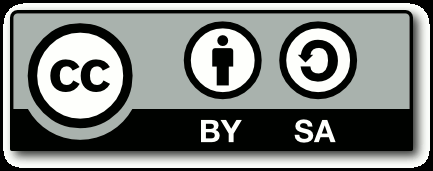Rekayasa Kebutuhan Teknologi Informasi Tepat Guna Menggunakan Teknik Elisitasi I*Frame dan Joint Application Design untuk Aplikasi Cosco pada Proyek Infrastruktur Jalan Tol di Era Industri 4.0
Abstract
Abstrak :
COSCO (cost control), merupakan sebuah aplikasi yang di implementasikan untuk membantu mendigitalisasi semua proses kontrol pekerjaan dan pengendalian keuangan jalan tol secara jarak jauh. Dalam pengembangan aplikasi, analisa kebutuhan merupakan tahap penentu sukses atau tidaknya sebuah aplikasi. Maka dari itu, dalam menganalisa kebutuhan COSCO menggunakan metode pendekatan I*Frame dan Joint Application Design (JAD) agar seluruh kebutuhan dan bisnis proses dari user dapat dipetakan dan terdokumentasi secara spesifik sesuai kebutuhan user. Melalui teknik I*Frame peneliti dapat mengidentifikasi sedini mungkin key stakeholder yang terlibat dan berpengaruh terhadap keputusan-keputusan pengembangan aplikasi COSCO mulai dari pimpinan hingga staff. Serta melalui metode JAD peneliti dapat mengidentifikasi tujuh dokumen hasil analisa kebutuhan sesuai dengan spesifikasi kebutuhan system. Dokumen tersebut diantaranya adalah Role Peran Pengguna, Flow Diagram, Kebutuhan Fungsional, Kebutuhan Non fungsional, Entity Relationship Diagram, Tampilan Antar Muka Sistem, Kebutuhan Adaptive Sistem
Abstract :
COSCO (cost control), is an application that has been implemented to help digitize all processes of work control and financial control of toll roads remotely. In application development, requirements analysis is a critical step in determining the success or failure of an application. Therefore, in analyzing the needs of COSCO using the I*Frame approach and Joint Application Design (JAD) so that all user needs and business processes can be mapped and specifically documented according to user needs. Researchers can use the I*Frame technique to identify key stakeholders, from leadership to staff, who are involved in and influence COSCO application development decisions as early as possible. And through the JAD method, researchers can identify seven documents resulting from the needs analysis following the system requirements specifications. These documents include Role Users, Flow Diagrams, Functional Requirements, Non-Functional Requirements, Entity Relationship Diagrams, User Interface and Adaptive System Requirements.
Keywords
Full Text:
PDFReferences
[1] Siahaan, Ummami (2011), “Natural Language Proccessing Foe Detecting Forward Reference In A Dokumen” IPTEK, The Journal for Technology and Science, Vol. 22.
[2] Davis, A M. (1993). Software Requirements: Object, Functions, and States.: Englewood Cliffs, NJ: Prentice Hall PTR.
[3] Leffingwell, Dean. (1997). "Calculating the Return on Investment from More Effective Requirements Management." American Programmer 10(4):13-16.
[4] Siahaan Daniel (2012), Analisa Kebutuhan Rekayasa Perangkat Lunak, Andi Yogyakarta.
[5] Rosyadi, I. J., 2013. Analisa dan Perancangan Sistem Informasi Persediaan Barang dengan menggunakan metode FAST pada CV. Tri Jaya. S1. Universitas Brawijaya.
[6] Hofmann, H.F. and Lehner, F. (2001). Requirements Engineering as a Succes Factor in Software Projects. IEEE Software.
[7] Indra, Daniel, Chastine (2019), “User Story Extraction From Online News For Software Requirement Elicitation : A Conceptual Model”.16th International Joint Conference On Computer Science And Software Engginering (JCSSE).
[8] Yu E. (1997), "Towards Modelling and Reasoning Support for Early-Phase Requirements Engineering", Proceedings of the 3rd IEEE Int. Symp. On Requirements Engineering (RE'97), Washington D.C., USA.
[9] Kassab M. The changing landscape of requirements engineering practices over the past decade. In: 5th International Workshop on Empirical Requirements Engineering, EmpiRE 2015 Institute of Electrical and Electronics Engineers Inc.; 2016. p. 1–8.
[10] Bakar NH, Kasirun ZM, Salleh N. Feature extraction approaches from natural language requirements for reuse in software product lines: A systematic literature review. Journal of Systems and Software 2015 8;106:132–149.
[11] Alan Dennis, Barbara Haley Wixom, Roberta M Roth. (2013). System Analysis and Design. 05. Wiley. Singapore.
[12] Ambreen, T.; Ikram, N.; Usman, M.; Niazi, M. Empirical research in requirements engineering: Trends and opportunities. Requir. Eng. 2018, 23, 63–95. https://doi.org/10.1007/s00766-016-0258-2.
[13] Manek, P.G.; Siahaan, D. Noise Detection In Software Requirements Specification Document Using Spectral Clustering. JUTI J. Ilm. Teknol. Inf. 2019, 17, 30–37. https://doi.org/10.12962/j24068535.v17i1.a771.
[14] Fahmi, A.A.; Siahaan, D.O. Algorithms Comparison For Non- Requirements Classification Using The Semantic Feature of Software. IPTEK J. Technol. Sci. 2020, 31, 1–9. https://doi.org/10.12962/j20882033.v31i3.7606.
[15] Romano, S.; Scanniello, G.; Fucci, D.; Juristo, N.; Turhan, B. Poster: The effect of noise on requirements comprehension. In Proceedings of the International Conference on Software Engineering, Madrid, Spain, 23–29 September 2018; IEEE Computer Society: Los Alamitos, CA, USA, 2018, pp. 308–309. https://doi.org/10.1145/3183440.3194984.
[16] Jørgensen, M.; Grimstad, S. The impact of irrelevant and misleading information on software development effort estimates: A randomized controlled field experiment. IEEE Trans. Softw. Eng. 2011, 37, 695–707. https://doi.org/10.1109/TSE.2010.78.
[17] Ferrari, A.; Gori, G.; Rosadini, B.; Trotta, I.; Bacherini, S.; Fantechi, A.; Gnesi, S. Detecting requirements defects with NLP patterns: An industrial experience in the railway domain. Empir. Softw. Eng. 2018, 23, 3684–3733. https://doi.org/10.1007/s10664-018- 9596-7.
[18] Alshazly, A.A.; Elfatatry, A.M.; Abougabal, M.S. Detecting defects in software requirements specification. Alex. Eng. J. 2014, 53, 513–527. https://doi.org/10.1016/j.aej.2014.06.001.
[19] Chari, K.; Agrawal, M. Impact of incorrect and new requirements on waterfall software project outcomes. Empir. Softw. Eng. 2018, 23, 165–185. https://doi.org/10.1007/s10664-017-9506-4.
[20] Martínez, A.B.B.; Arias, J.J.P.; Vilas, A.F. Merging requirements views with incompleteness and inconsistency. In Proceedings of the Australian Software Engineering Conference, ASWEC, Brisbane, Australia, 29 March–1 April 2005; pp. 58–67. https://doi.org/10.1109/aswec.2005.29.
Refbacks
- There are currently no refbacks.






